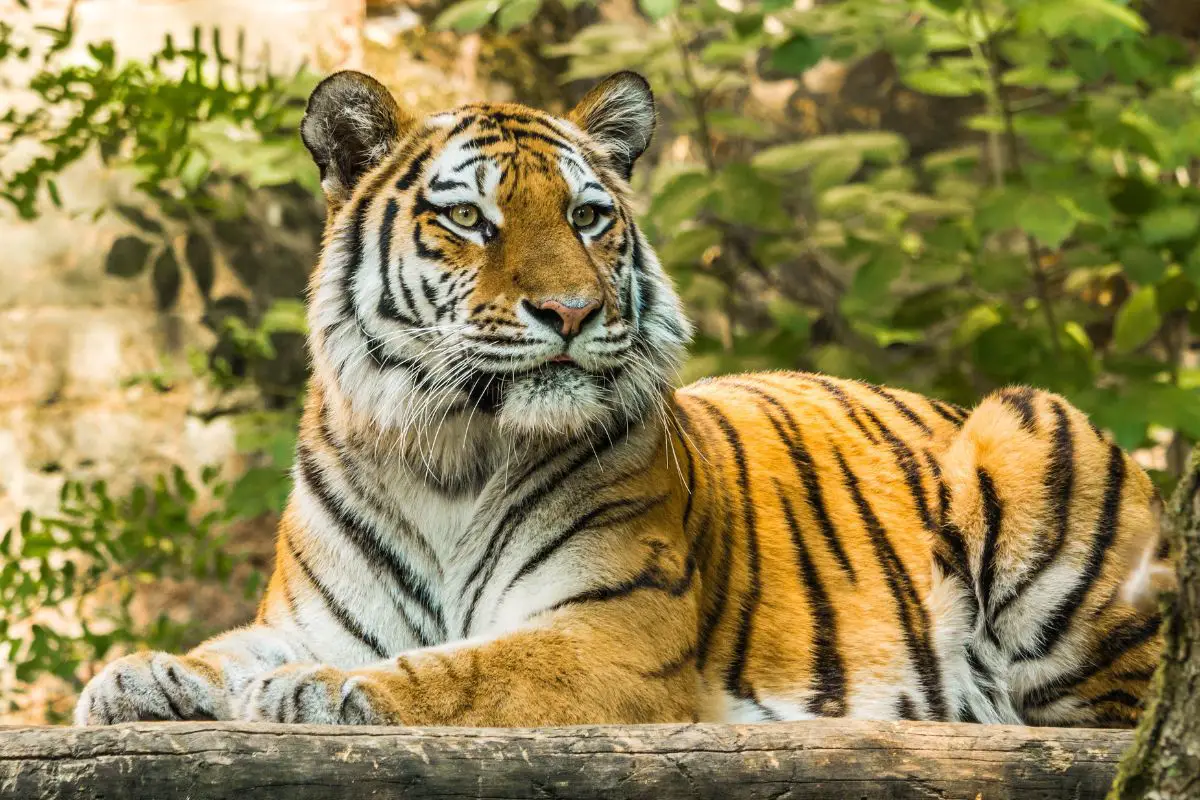
A Tiger (Panthera tigris) is known as the largest member of the Felidae (aka cat) family, first scientifically observed in the mid-1750s. The tiger, which is part of the mammal class, is best known for its dark vertical stripes that cross over orange and white fur. Tigers are diurnal animals, which means they sleep at night.
The tiger’s habitat is quite large and once stretched across much of Eastern Turkey to the Himalayas and even the islands of Java, Bali, and Sunda, among others. Tigers are large, strong, territorial animals who are typically solitary predators. The tiger is among several animals that are featured in cultural folklore and mythology, and they are the nationally-recognized animal in South Korea, India, Malaysia, and Bangladesh.
Tigers feast on ungulates (like deer and wild boar -weighing hundreds of pounds) and is considered apex predator – one who is at the top of the food chain. Male tigers are up to 1.7 times larger than their female counterparts. Males may weigh up to 650 pounds, while females max out around 360 pounds.
The Siberian and the Bengal Tigers are the largest (and tallest) of the tigers. Tigers that live in the wild can survive for up to 15 years, while those in captivity have an average lifespan of about 22 years.
1. Lion (Panthera leo)
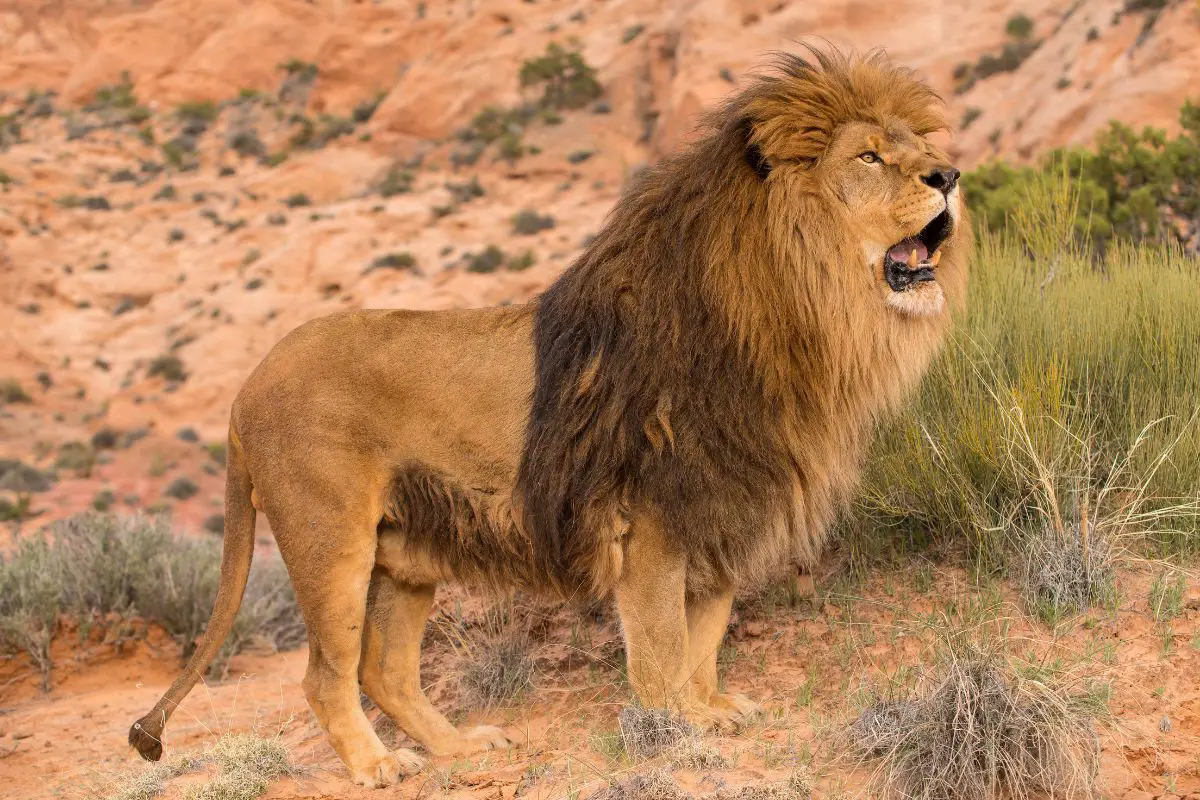
The Lion holds the distinction of being the second largest cat on the globe. Lions once roamed across the continents of Africa, Asia, and even parts of Europe, although now most live in India and the Sub-Saharan parts of Africa. They are quite adaptive and live on grasslands, shrublands, and savannas but have been seen as high as the snow line on Mount Kenya.
The Lion is broad-chested and quite muscular, with adult males larger than female lions. Lions are recognized to be among the most social of the wild cat species. These mammals live in groups known as a pride.
Like the tiger, Lions have been an integral part of cultural and ancient depictions, stories, and mythology. Male lions have large and prominent manes of hair on their head, shoulders, chest, and neck. An average adult male can reach over 400 pounds, depending on their native habitat.
Females, however, can reach about 300 pounds. Lions feast mostly on ungulates and other mammals, including zebra, buffalo, and giraffes. In the wild, lions live for 16 years, with females tending to live longer.
In captivity, without natural threats, lions live much longer.
2. Leopard (Panthera pardus)
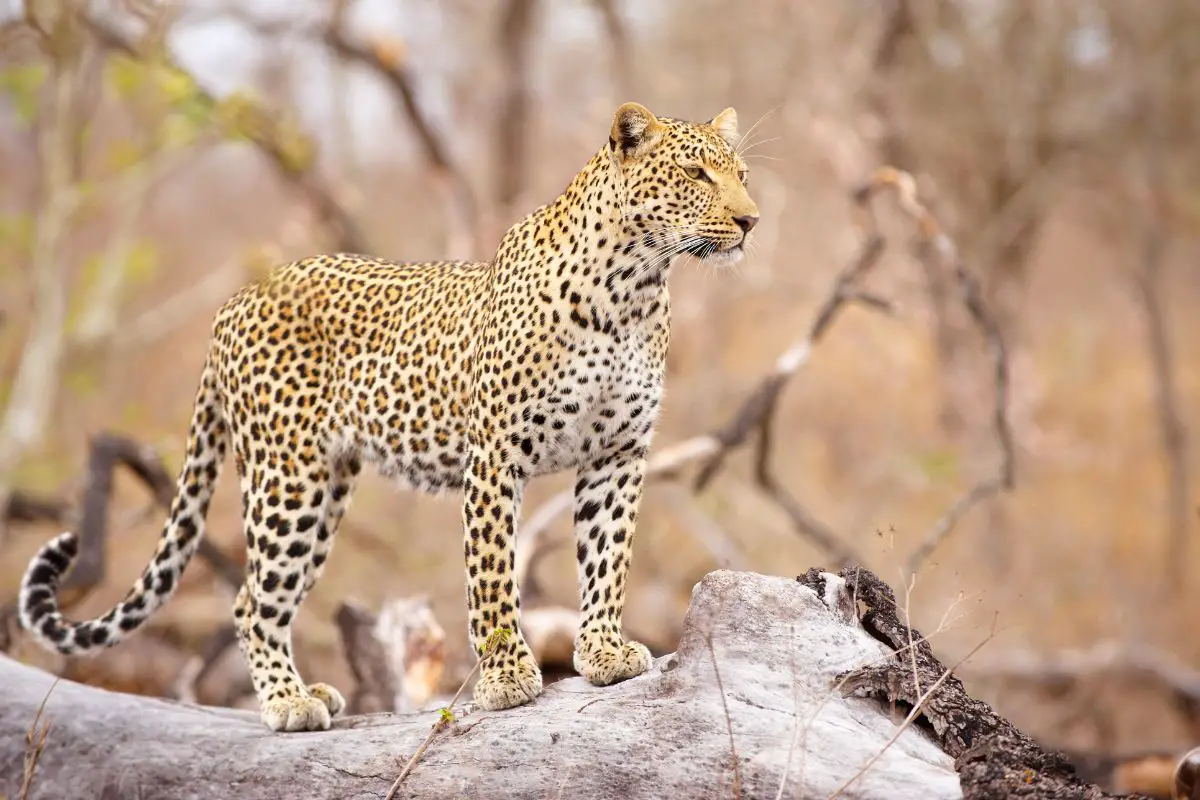
The Leopard, with its characteristic spots (known as rosettes), is found across the globe, including parts of sub-Saharan Africa, south Russia, Asia, and parts of the Indian subcontinent. Leopards have thick fur that is softer on their underbelly and tend to be both territorial and solitary mammals. The leopard is quite muscular, although its limbs are shorter than other wild felines.
A leopard can grow as long as 6.5 feet, with tales that can extend another 2 to 3 feet. Males leopards weigh about 200 pounds, with females weighing less than 140 pounds. The Leopard is a carnivore that prefers ungulates.
They can attack prey that weighs up to 90 pounds that including impalas, primates, and jackals, among others. Leopard in the wild have a lifespan of up to 15 years but can live more than 20 years when in captivity.
3. Canada Lynx (Lynx canadensis)
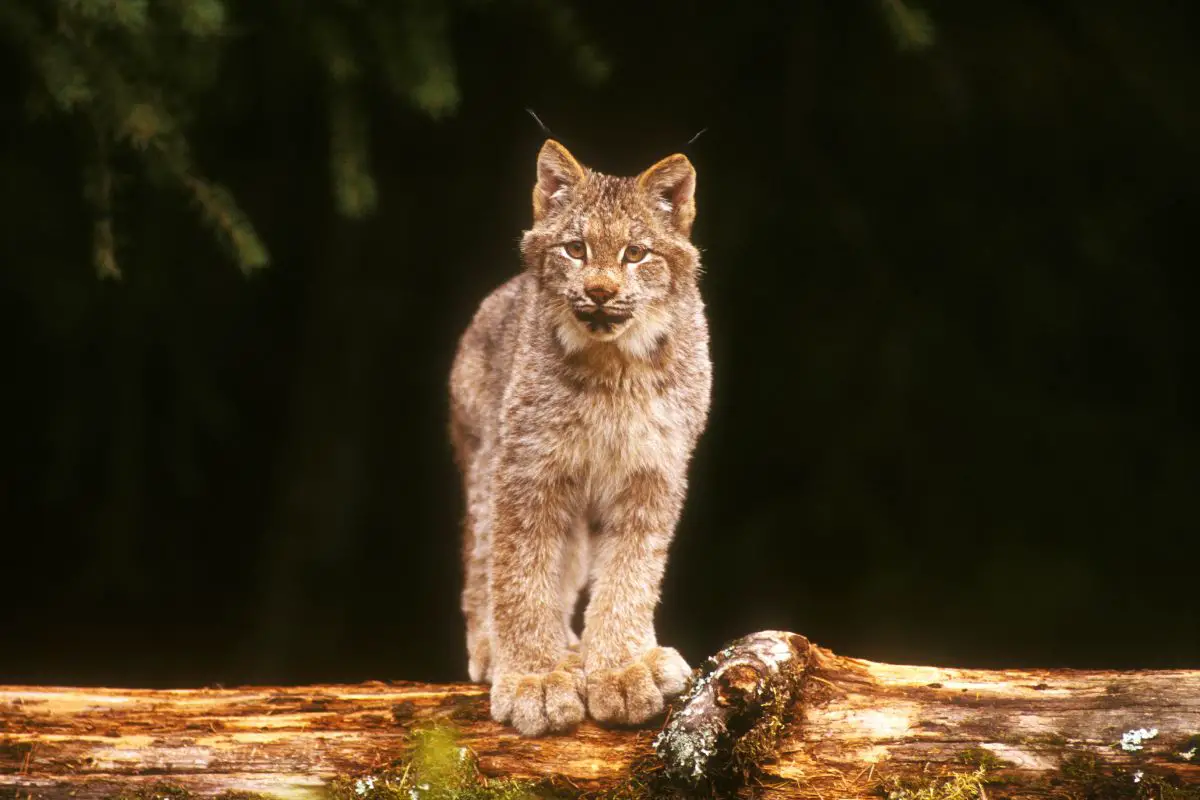
The Canadian Lynx is the northernmost member of the lynx genus. This medium-sized mammal and member of the cat family lives across dense forest regions of Canada, Alaska, and parts of the U.S. that border Canada. The Canada Lynx’s most noticeable feature is its massive paws (which serve as the mammal’s snowshoes) that are fur covered, allowing the lynx to cross snow-covered lands without sinking deep into the snow.
The Canada Lynx is a specialist predator, with retractable claws and 28 teeth to feast on the snowshoe hare primarily. Males weigh upwards of 40 pounds, while females are usually no bigger than 26 pounds. Their back limbs, like the bobcat, are longer than the lynx’s front limbs.
These beautiful and unusual snow cats can live between 10 and 20 years.
4. Bobcat (Lynx rufus)
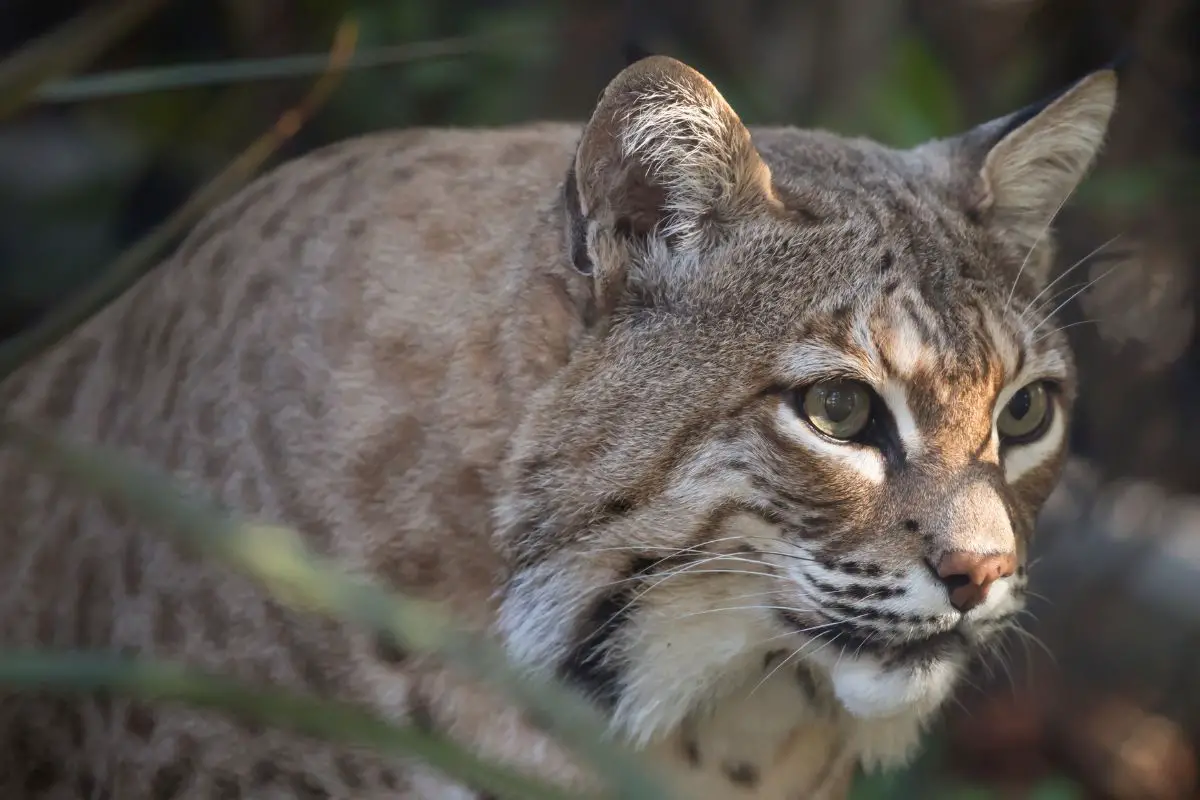
The Bobcat, which may be known as a Red Lynx, is small sized member of the Felidae family. The Bobcat is a cat native to most of North America and Mexico. The bobcat has a bobbed tail, which is the derivative of its name.
Bobcats have sharp vision and hearing capabilities, plus a good sense of smell when hunting. They are also great climbers and can swim but tries to avoid water. The bobcat can survive long periods of time without eating but will eat voraciously when prey is available.
They hunt by stalking, typically hunting for mammals (squirrels, mice, muskrats, moles, etc.) that weigh up to a dozen pounds. Adult male bobcats can weigh up to 40 pounds, while females are smaller, with a maximum weight of 33 pounds. The lifespan of a bobcat is about seven years, with some living to ten years.
5. Puma (Puma concolor)
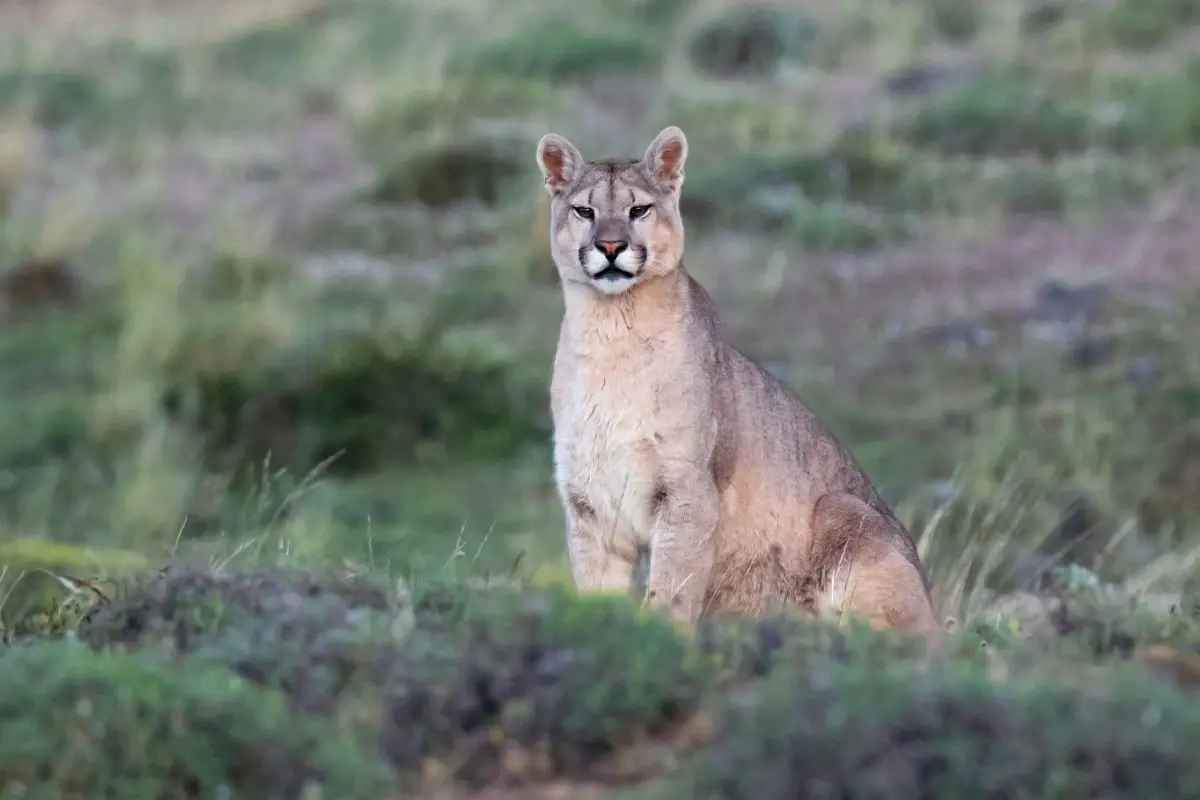
The Puma, which may also be known as a cougar or mountain lion) is a member of the Felidae family. Their habitat includes locations across the U.S., southern Canada, Mexico, and South America. Pumas are large but tend to be secretive wild cats.
They prefer to live in mountainous rocky crags and sloping fields and pastures. Pumas are the fourth largest of the cat family, with great abilities to leap as high as 18 feet vertically and 40 feet horizontally. Adult males can grow to nearly eight feet and more than 200 pounds.
Adult female pumas can grow to 6.5 feet and weigh about 140 pounds. They have powerful jaws to hold prey and retractable claws to use when hunting. Pumas are carnivores with a diet that consists of small animals, birds, and fish.
Larger pumas may prey on deer, goats, raccoons, and sheep.
6. Cheetah (Acinonyx jubatus)
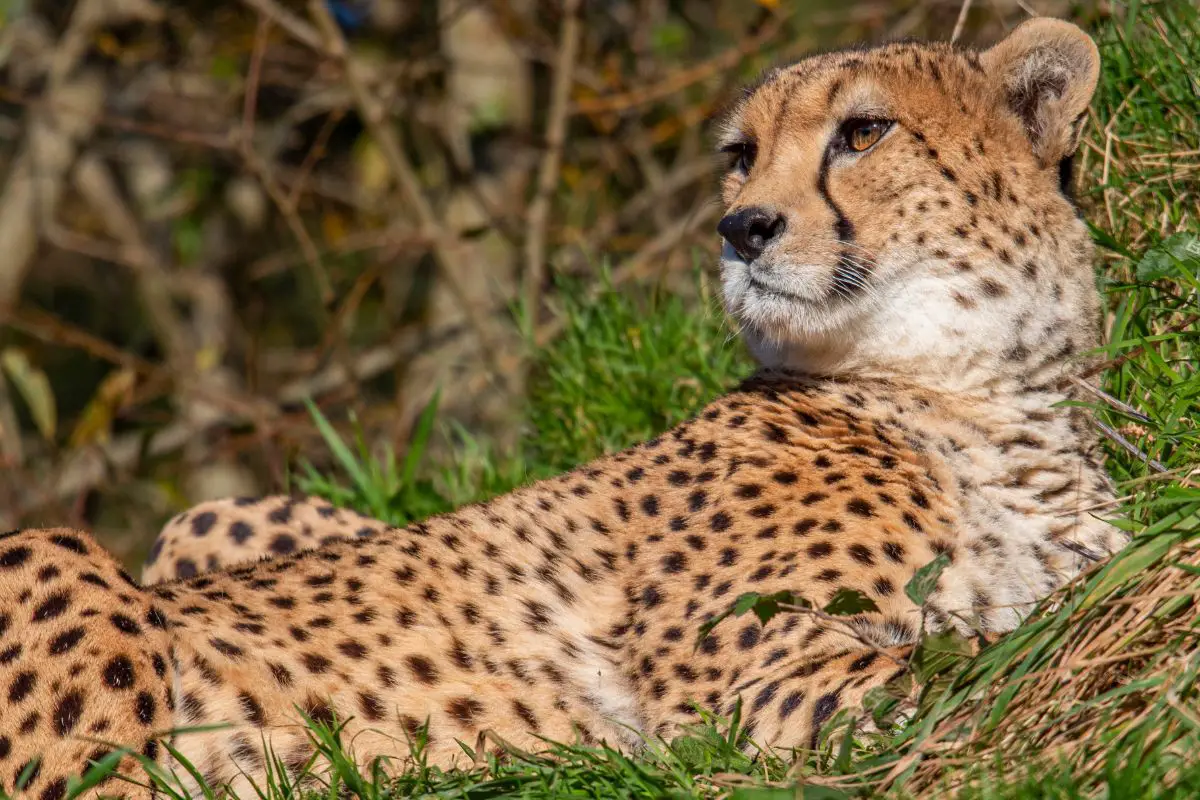
The Cheetah, native to the continent of Africa and central Iran, is not only the fastest wild cat but the fastest animal on the globe. The cheetah can go from standing to 60 MPH in only three seconds. The cheetah can also turn on a dime when pursuing prey.
They inhabit savannahs, mountains, and hilly deserts. Cheetahs have adapted to the heat of Africa as it only needs to drink once in four days. Their median lifespan for those in the wild is expected to be 12 years.
Adult cheetahs, which are social animals, weigh about 150 pounds, with a short snout and black facial streaks that resemble tears. The cheetah hunts during the day, peaking at dusk and dawn. They feast on medium ungulates like gazelles and impalas.
7. Jaguar (Panthera onca)
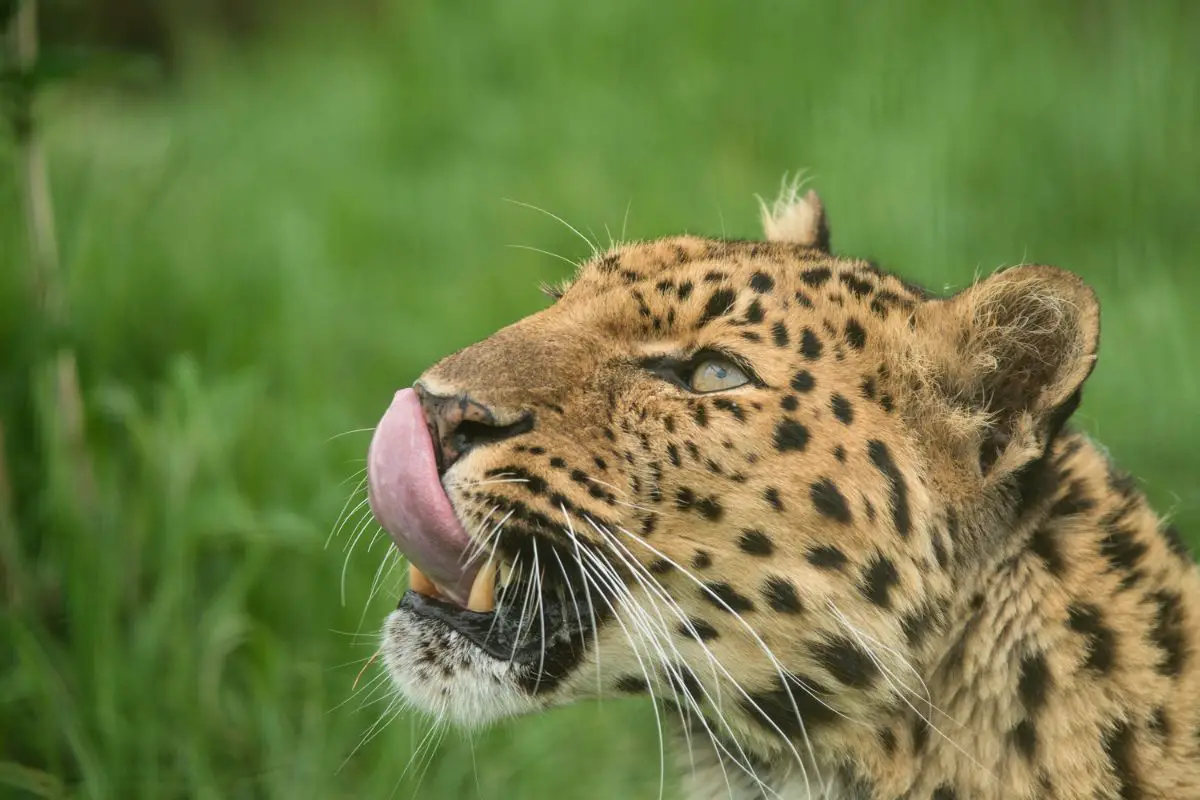
The Jaguar, like the leopard, is covered in rosettes, although some are all black. It is a wild cat that is considered the most loving. Jaguars are great swimmers but often rest on tree branches that overhang rivers.
These great climbers inhabit more than 1.5 dozen countries and are the largest cat in the Americas. The Jaguar, like the leopard, is covered in rosettes, although some are all black. The Jaguar is muscular and compact.
It is an apex predator that possesses a powerful jaw that can pierce through a tortoise shell or skull of its prey. The size of the Jaguar will depend on its habitat, with males weighing upwards of 200 pounds in Brazil and Venezuela. The Jaguar is active primarily at twilight and night.
It is strictly a carnivore that may prey on large animals up to 300 pounds. Jaguars have a lifespan of 12 to 16 years.
8. Ocelot (Leopardus pardalis)
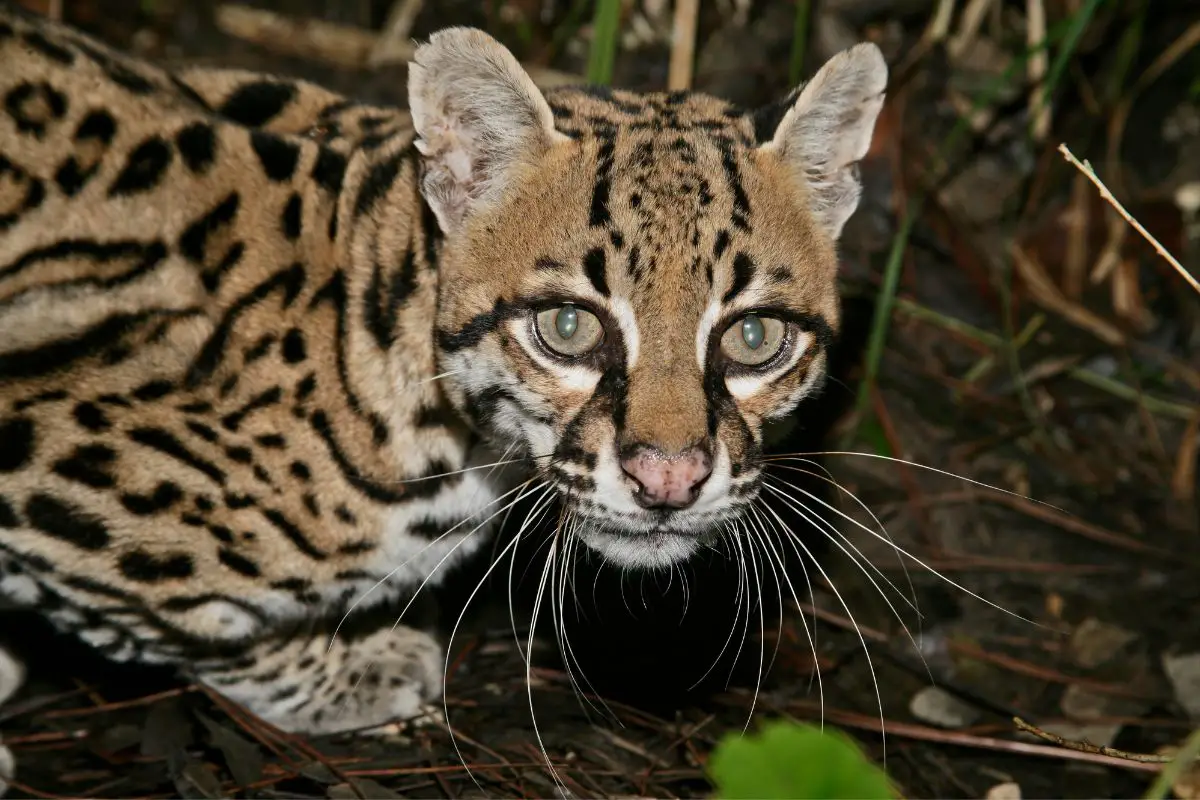
The Ocelot is a medium-sized member of the wild cat family. The Ocelot is native to Central and South America, Mexico, the southwestern part of the U.S., and several Caribbean Islands. They prefer to inhabit areas that include dense vegetation as cover and a water source.
The Ocelot is active at night and twilight hours but tends to be territorial and a solitary hunter that follows scent trails to follow their prey. They are proficient climbers, swimmers, and leapers, preferring to feast on opossums and armadillos and other small mammals immediately after they are caught. They can also eat insects, reptiles, and birds, to name a few.
Ocelots grow to about 35 pounds but have an unusually small footprint which measures 2 cm by 2 cm. Their fur has many spots with a few dark stripes. The Ocelot has a lifespan between 8 to 11 years.
9. Snow Leopard (Panthera uncia)
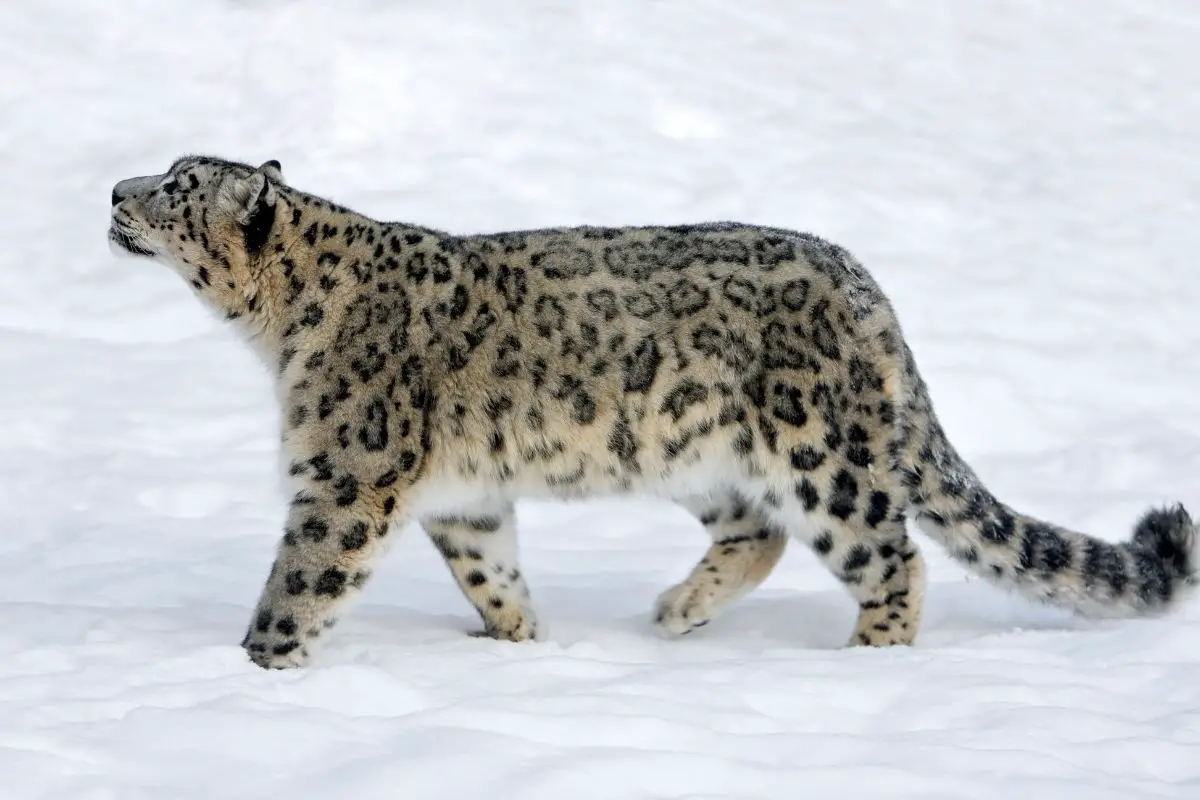
The Snow Leopard is a wild cat and a member of the Felidae family. It is native to the mountains of both South and Central Asia. They primarily live in alpine and subalpine elevations between 9,000 and 14,000 feet above sea level.
Its canine teeth are longer than one inch, with a respiratory system and wide paws that are adapted to high-altitude living. The Snow Leopard is grey to whitish with black spots and rosettes. It has thick fur and shorter legs.
Now Leopards can weigh up to 150 pounds. The Snow Leopard is active at dawn and then early evenings, resting on ridges and cliffs that offer great vantage points for hunting. This wild cat, like the tiger, is a carnivore, feasting on wild mountain animals, which may include wild boar, sheep, deer, mice, and squirrels, among others.
It is estimated that a snow leopard can live in the wild for up to 13 years, but more than 20 when living in a zoo.
10. Clouded Leopard (Neofelis nebulosa)
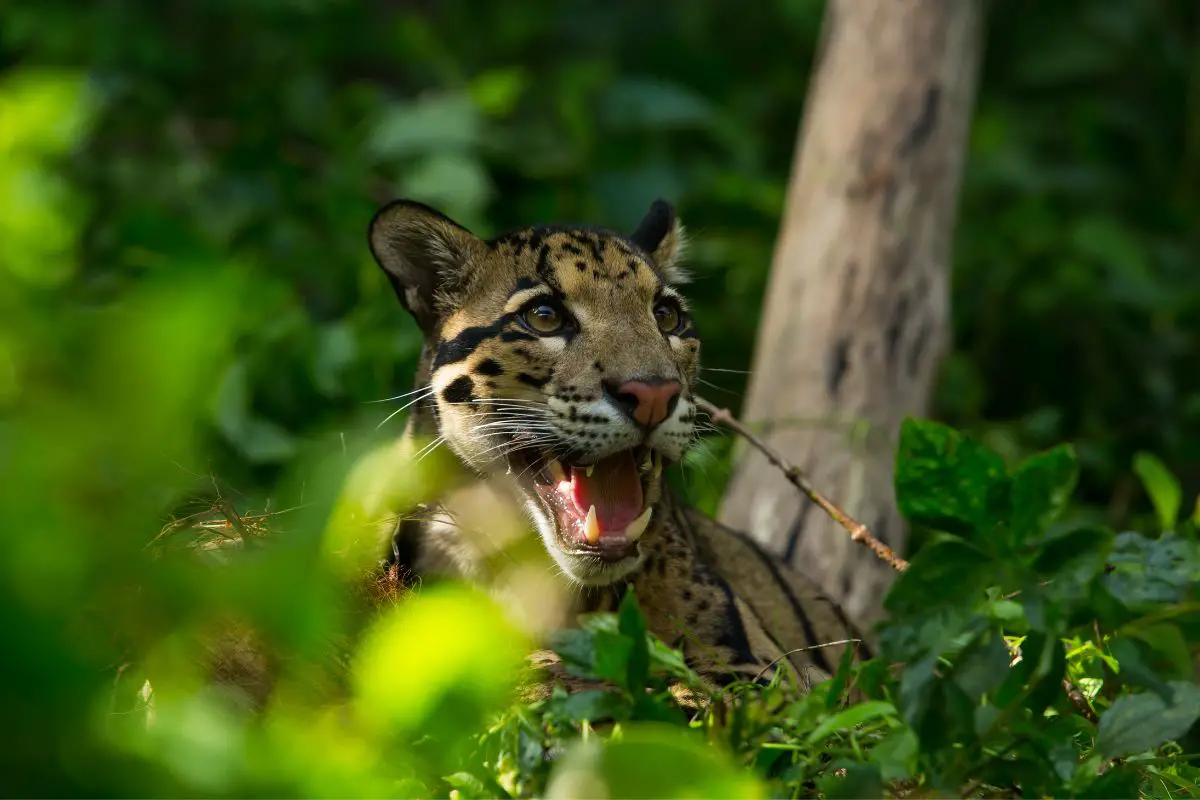
The Clouded Leopard is the smallest of the big cat species and is often considered the most acrobatic of the Felidae family. They are native to mainland Asia, Southern China, and the Himalayas foothills. They have an unusually long tail which they use to balance when climbing and up and down trees.
The Clouded Leopard is recognized to be the only big cat that purrs and, for its size, has some of the longest canine teeth in the big cat family. The Clouded Leopard is a solitary cat that tends to weigh between 25 and 50 pounds, with males larger and heavier. This big cat stalks its prey, which includes different kinds of vertebrates.
They have been seen feasting on deer, porcupines, squirrels, and pheasants, to name a few. These beautiful big cats are believed to be mostly nocturnal and may live up to 15 years in the wild or a little longer when in human care.
11. Sunda Clouded Leopard (Neofelis diardi)
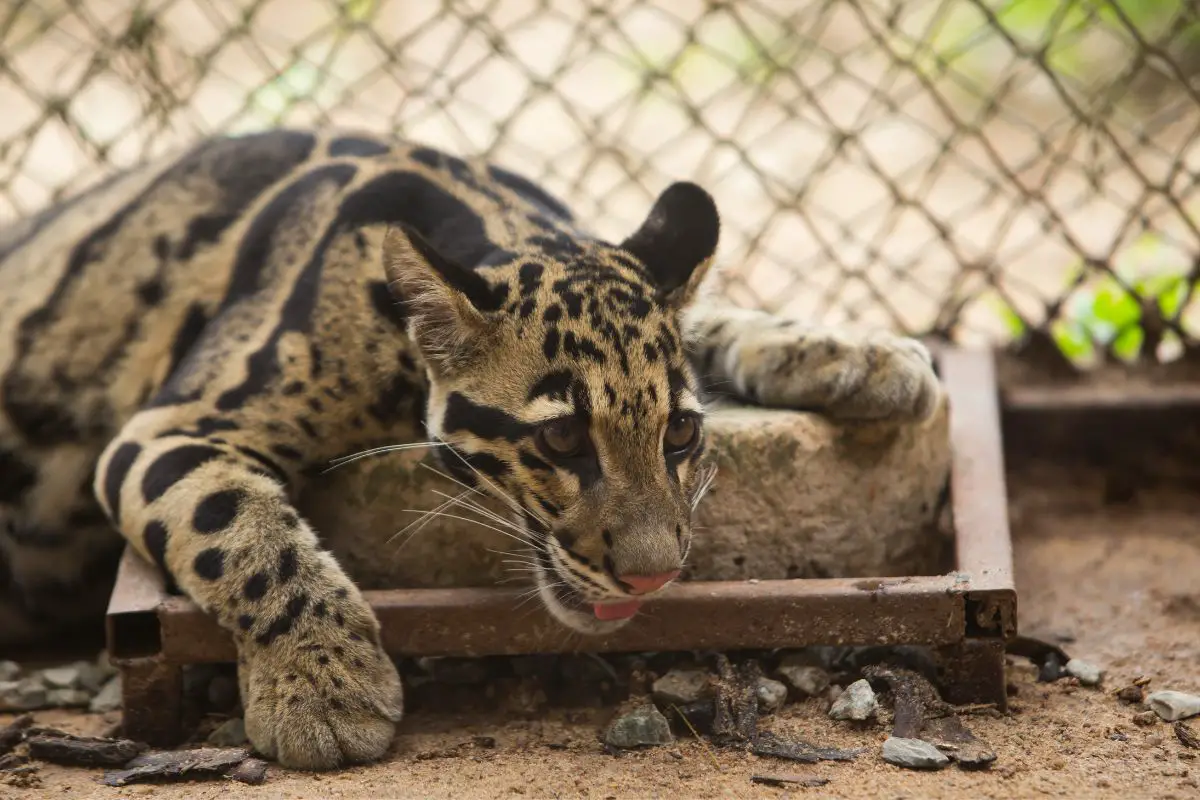
Native to Sumatra and Borneo, the Sunda Clouded Leopard is also known as Diard’s Cat or Enkuli Clouded Leopard. They inhabit hilly areas in Sumatra and low land and rainforest areas in Borneo. This wild cat has a stocky build and can weigh up to 55 pounds.
On Borneo, the Sunda Clouded Leopard is the largest carnivore. This wild cat is quite private and secretive, which is why so little is known about its habits and preferences. The Sunda Clouded Leopard is thought to be a solitary cat that hunts primarily on the ground for prey as it is dependent on forests for its existence.
They can average up to 55 pounds when fully grown, with a tail that can grow as long as their body. When in danger, these cats use their climbing skills to hide out of sight when in danger.
12. Caracal (Caracal caracal)
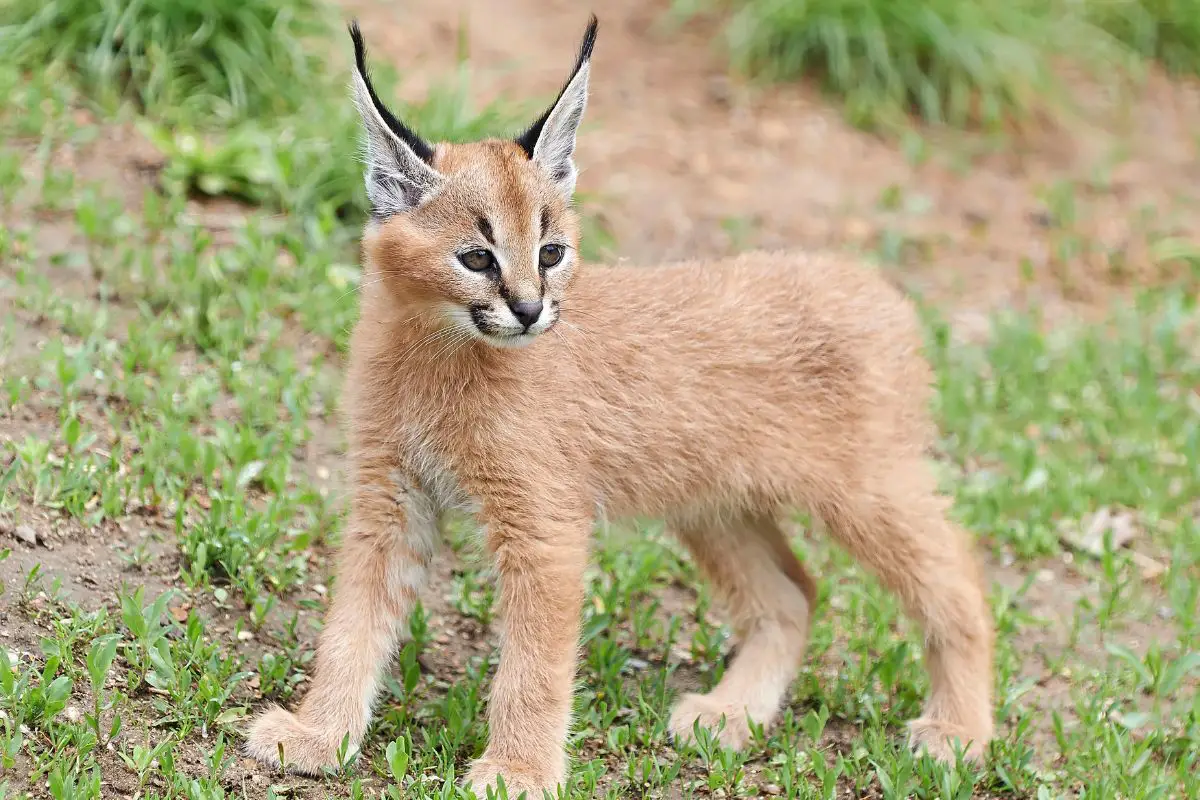
Native to Asia, Africa, the Middle East, and the areas of northwestern India, the Caracal lives among the savannas, scrub forests as well as marshy lowlands. It is a nocturnal wild cat with a robust build and is typically a reddish tan. These wild cats, which are slender, are also highly secretive and, therefore, challenging to observe.
What is known about the Caracal is that they are territorial in nature and live a solitary life or in pairs. They are carnivores that prey on birds, rodents, and other small mammals. They can weigh between 18 and 40 pounds but have incredible leaping abilities.
Some have been seen leaping ten feet to snag a bird while flying in midair. The average lifespan of the Caracal is about fifteen years.
13. Serval (Leptailurus serval)
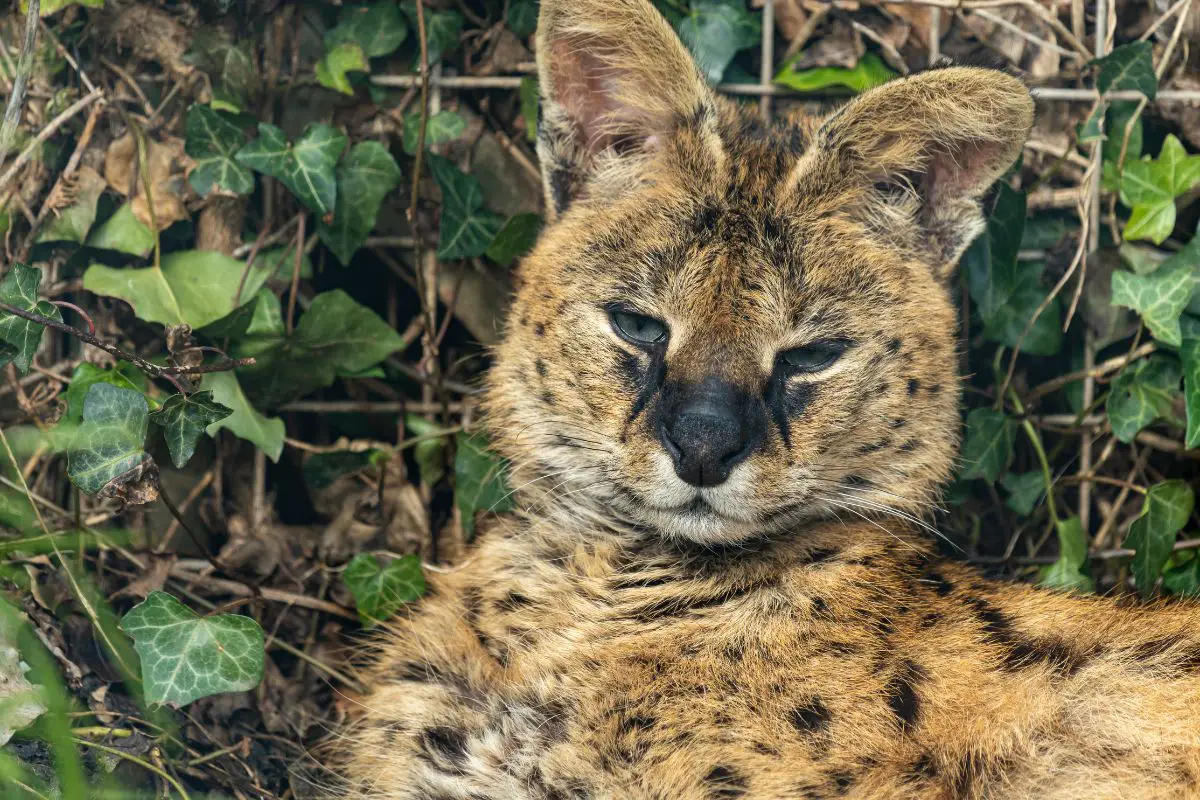
The Serval, which is native to Africa (but widespread in southern parts of the continent), is a mammal and a member of the Felidae family. The serval, which has been kept as a pet where permitted, is a slender cat that is considered a medium-sized feline with a maximum weight of 40 pounds. These unusual cats, who tend to be solitary, have small heads, short tails, and long legs.
The Serval, like the tiger, is a carnivore who hunts both night and day, with the ability to leap more than 6.5 feet to land on its prey. Servals can also eat grass which helps facilitate their digestion. They can walk up to 2.5 miles at night.
They prefer to live in grasslands, savannas, and wetlands and are solitary cats that prey on rodents, reptiles, and birds.
14. Margay (Leopardus wiedii)
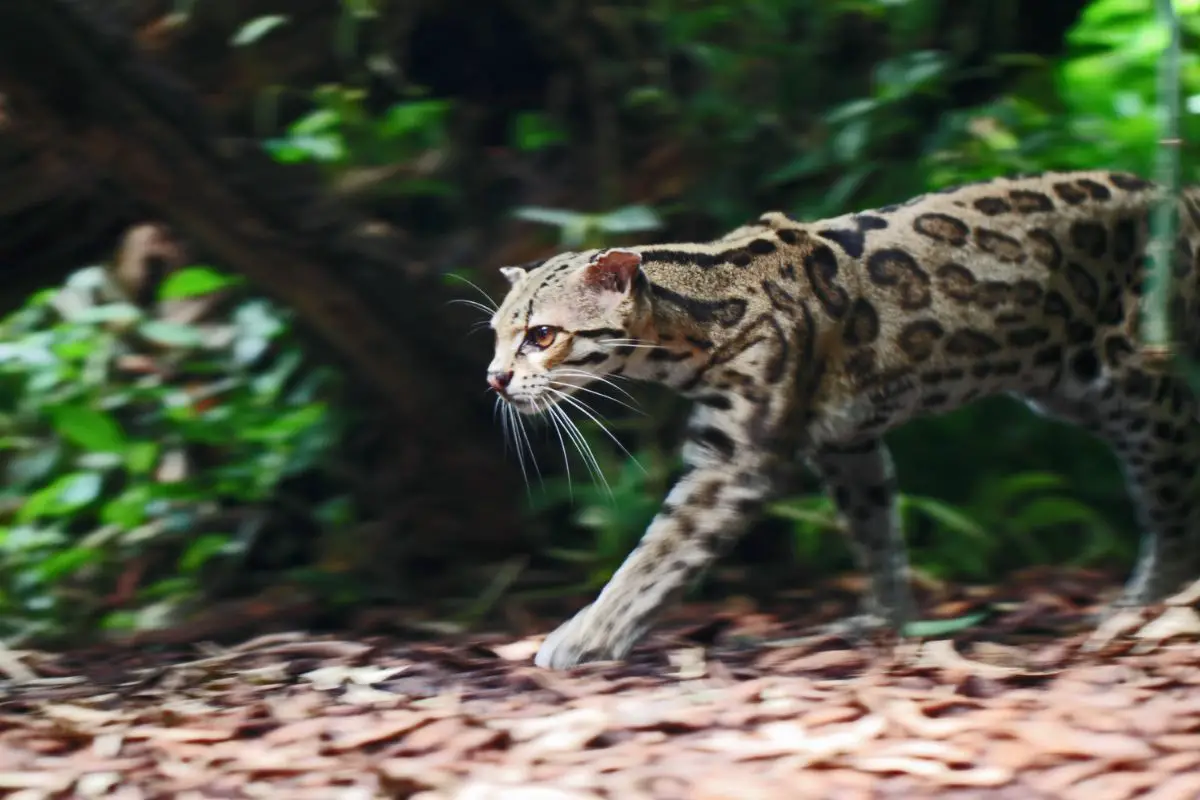
The Margay resembles the ocelot; only it is small and more adept at climbing. Margays, which have been called Tree Ocelots, are small cats that are native to South and Central America. They are nocturnal felines that live in forests and other evergreen areas.
The Margay, which is a nocturnal feline, can grow to up to ten pounds. It differs from all other felines in that females have only two teats. The Margay has the incredible ability to jump 12 feet horizontally.
These tree dwellers also have the ability to leap after birds or chase monkeys among the treetops. However, the margay will also eat grass vegetation, eggs, and arthropods to assist with digestion.
15. Borneo Bay Cat (Catopuma badia)
The Borneo Bay Cat can only be found on the island of Borneo. It remains quite mysterious and difficult to observe since it was first identified in the mid-1870s. The Bay Cat has a bright chestnut fur color.
They weigh between 6 and 9 pounds and are about the size of a house cat. The Borneo Bay Cat is nocturnal and secretive and rarely seen, and considered highly endangered.



